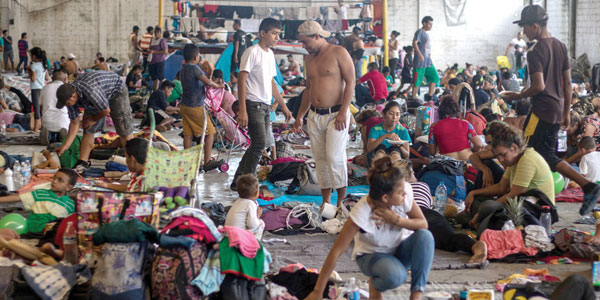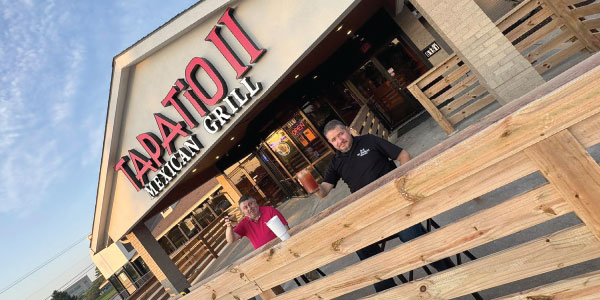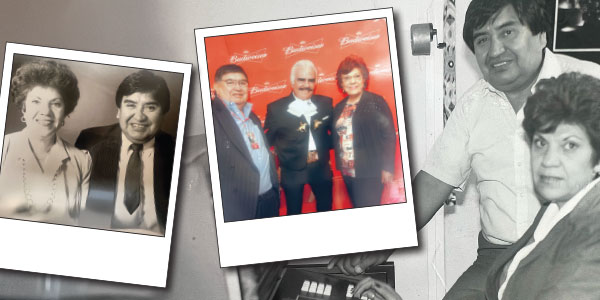
By Tere Siqueira
As multiple news outlets have reported, a migrant caravan of thousands of Central Americans has forged its way across Mexico.
During their journey, the travelers walked along the highway near Mexico’s border with Guatemala. They passed through Tapachula, a Mexican border city.
Tapachula resident Guadalupe Jimenez remembers what it was like when they passed through the city.
“Everyone was feeling a big amount of uncertainty,” Jimenez recalled. “We didn’t know what to expect. In Tapachula, the majority of (the) people have the misconception that Central Americans are (a) problematic people.”
Locals tried to avoid looters and confrontations with the migrants. As a result, many businesses closed. Many educational activities were called off, too.
But despite such preventative measures, some confrontations between caravan travelers and authorities took place, Jimenez said. In addition, locals complained about how the caravan travelers left their streets covered in trash.
“There was a big situation of insecurity in the streets,” Jimenez recalled. “It was mainly created due to the big and uncontrollable conglomeration of people.”
It appears some of the travelers will stay in Mexico – at least for a while. The Mexican government has reportedly processed 2,800 asylum applications. More than 1,100 immigrants have been deported.
“I think that is a very difficult and delicate subject,” Jimenez said. “They are running away from horrible conditions, and I think that the U.S. has a better infrastructure to help them. But Mexico isn’t capable. Our government doesn’t have the conditions to offer people from other countries asylum.”
During its journey, the caravan fragmented, when Veracruz Gov. Miguel Angel Yunes initially offered 160 buses to take the migrants from his state to Mexico City. Later, Yunes revoked his offer, arguing that Mexico City was unprepared to receive the caravan.
The caravan reunited in Mexico City. Resident Paola Acosta remembers seeing the travelers.
“It was really impressive to see the caravan in person,” Acosta said. “Seeing the conditions of these people after traveling for days, it’s a powerful image.”
Although Mexico’s capital city is experiencing infrastructure problems, including a massive water service cut, the travelers have received shelter there. As multiple news sources have reported, thousands of travelers began arriving on Sunday (Nov. 4) at the Jesus Martinez sports complex.
The caravan has traveled about 1,500 kilometers and crossed two international borders. The travelers are expected to continue traveling in their quest to reach the United States and seek asylum. But when the travelers will move again remains uncertain.
Acosta believes Mexico should help the travelers “and offer them a chance.”
“Both Mexican and American governments need to find a way to support in a responsible way,” Acosta said. “We need to understand that migrants are sacrificing everything in this journey, which means that asylum is their only option of survival.”
Momentos de tensión mientras la caravana recorre México
(Parte II de una serie)
Como lo han informado varios medios de comunicación, una caravana de migrantes de miles de centroamericanos se ha abierto camino en todo México.
Durante su viaje, los viajeros caminaron por la carretera cerca de la frontera de México con Guatemala. Pasaron por Tapachula, una ciudad fronteriza mexicana.
La residente de Tapachula, Guadalupe Jiménez, recuerda cómo fue su paso por la ciudad.
“Todos sentían una gran incertidumbre”, recordó Jiménez. “No sabíamos qué esperar. En Tapachula, la mayoría de las personas tienen la idea errónea de que los centroamericanos son personas problemáticas”.
Los locales intentaron evitar los saqueadores y las confrontaciones con los migrantes. Como resultado, muchas empresas cerraron. Muchas actividades educativas también fueron canceladas.
Pero a pesar de estas medidas preventivas, se produjeron algunos enfrentamientos entre los viajeros de las caravanas y las autoridades, indicó Jiménez. Además, los locales se quejaron de cómo los viajeros de las caravanas dejaron sus calles cubiertas de basura.
“Hubo una gran situación de inseguridad en las calles”, recordó Jiménez. “Fue creado debido a la gran e incontrolable conglomeración de personas”.
Parece que algunos de los viajeros se quedarán en México, al menos por un tiempo. Según informes, el gobierno mexicano ha procesado 2,800 solicitudes de asilo y más de 1,100 inmigrantes han sido deportados.
“Creo que es un tema muy difícil y delicado”, dijo Jiménez. “Están huyendo de condiciones horribles, y creo que EE. UU. tiene una mejor infraestructura para ayudarlos. Pero México no es capaz, nuestro gobierno no tiene las condiciones para ofrecer asilo a personas de otros países”.
Durante su viaje, la caravana se fragmentó, cuando el gobernador de Veracruz, Miguel Ángel Yunes, ofreció inicialmente 160 autobuses para llevar a los migrantes de su estado a la Ciudad de México. Más tarde, Yunes revocó su oferta, argumentando que la Ciudad de México no estaba preparada para recibir la caravana.
La caravana se reunió en la ciudad de México y la residente Paola Acosta recuerda cómo fue haber visto a los viajeros.
“Fue realmente impresionante ver la caravana en persona”, dijo Acosta. “Ver las condiciones de estas personas después de viajar por días, es una imagen poderosa”.
Aunque la ciudad capital de México está experimentando problemas de infraestructura, incluido un corte masivo del servicio de agua, los viajeros se han refugiado allí. Como varios medios de comunicación han informado, miles de viajeros comenzaron a llegar el domingo (4 de noviembre) al complejo deportivo Jesús Martínez.
La caravana ha recorrido unos 1,500 kilómetros y ha cruzado dos fronteras internacionales. Se espera que los viajeros continúen viajando en su búsqueda para llegar a los Estados Unidos y buscar asilo. Pero cuando los viajeros se moverán de nuevo sigue siendo incierto.
Acosta cree que México debería ayudar a los viajeros “y ofrecerles una oportunidad”.
“Tanto el gobierno mexicano como el estadounidense deben encontrar una manera de apoyar de manera responsable”, dijo Acosta. “Necesitamos entender que los migrantes están sacrificando todo en este viaje, lo que significa que el asilo es su única opción de sobrevivir”.










